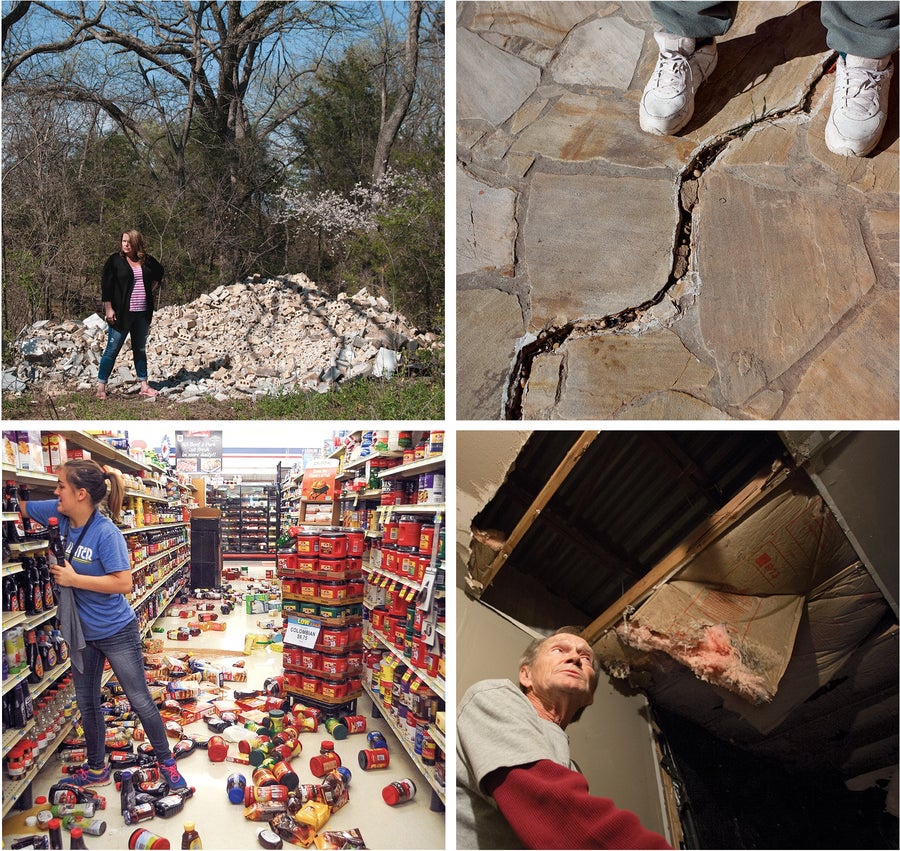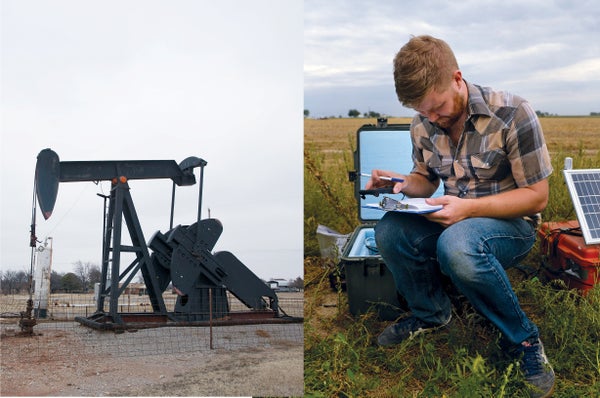In Oklahoma, Texas, Kansas and a handful of other states, oil and gas production has triggered a surge of earthquakes unlike anything scientists have ever seen. Oklahoma once had an average of one or two earthquakes a year, but in 2015 it had nearly 900. Meanwhile the rate of earthquakes in the central and eastern U.S.—long considered seismically quieter parts of the country—rose from 29 a year to more than 1,000.
The quakes have caused injuries, damaged homes and spawned class-action lawsuits. But given that oil and gas production is not expected to stop anytime soon, these seismic events probably won't either. In response, academic researchers, the federal government, energy companies and regulatory agencies have mobilized to try to reduce the frequency and strength of induced earthquakes—and a series of recent papers and other findings shows they have made rapid progress, although many questions remain.
Scientists have understood since the 1960s that injecting fluid into the ground at high pressure can cause earthquakes. In most cases, it is not hydraulic fracturing (or fracking) of oil- and gas-bearing rock that sets off tremors but the related process of wastewater injection. For instance, oil wells in Oklahoma—whether they are fracked or not—produce 10 or more barrels of groundwater for every barrel of oil. Companies separate the water and other by-products from the oil and inject it back into the ground via wastewater wells (a step designed to protect soil and surface water). But these injections can cause pressure that induces earthquakes by counteracting the friction that holds faults together. As Oklahoma and many other states entered the most recent energy boom, the amount of fluid pumped into wastewater wells grew rapidly.
On supporting science journalism
If you're enjoying this article, consider supporting our award-winning journalism by subscribing. By purchasing a subscription you are helping to ensure the future of impactful stories about the discoveries and ideas shaping our world today.

Prague, Okla., March 2015; Coyle, Okla., Jan. 2016; McLoud, Okla., Feb. 2016; Pawnee, Okla., Sept. 2016. Credit: Nick Oxford Redux Pictures (Prague); J Pat Carter Getty Images (Coyle, McLoud); David Bitton AP Photo (Pawnee)
The team found that faults oriented in a certain direction, relative to natural tectonic stresses in the ground, are the ones most primed to become active. Faults that are critically stressed—that is, under enough natural force coming from just the right directions—may require a surprisingly small amount of additional force to rupture. (Compare this to a brick lying on a table. If you press down on the brick, it won't move. Nudge it from the side, however, and it will slide across the table.) That pressure can be as little as a few pounds per square inch (psi), says Jens-Erik Lund Snee, a Ph.D. candidate at Stanford and lead author of a Texas stress map published in October 2016 in Geophysical Research Letters. Lund Snee hopes that companies and regulators will pair these stress maps with fault maps to understand where wastewater injection will most likely cause earthquakes—and then steer clear of those areas.
One limitation of this study is that many earthquakes in Texas and Oklahoma have occurred on previously unmapped faults. Energy companies, however, may be able to use the Stanford team's data because they often have a better understanding of the subsurface than academic scientists or regulators. “It doesn't solve the problem, but it sure takes a big step toward solving the problem,” says Heather DeShon, a seismologist at Southern Methodist University in Dallas who studies human-induced earthquakes.
Researchers are also investigating the benefits of installing dense networks of seismic monitors that could detect tiny earthquakes near wells. This could allow companies or regulators to take quick action to reduce injection volumes before the quakes grow larger, and Texas is currently installing such a network. Meanwhile some scientists suggest injecting waste liquid only into layers of the ground that are naturally sealed off from deep faults. Other experts are also making progress in figuring out exactly how much injection pressure different areas can tolerate before inducing seismic activity.
As scientists investigate pragmatic solutions, Oklahoma is still shaking. State seismologist Jake Walter says the various new findings will help in the long run, but he is focused on finding shorter-term answers. Since 2015 Oklahoma has slashed injection volumes and, in some cases, suspended wastewater disposal near seismic zones in an effort to mitigate the quakes. Although the state's earthquake rate subsequently slowed in 2016, the events have grown stronger in magnitude. Why? One explanation may be that as high-pressure pockets from wastewater injections continue to spread underground like a drop of water on a paper towel, they encounter new and sometimes larger faults. So even though there has been progress, Walter says, “We're not out of the woods yet.”
